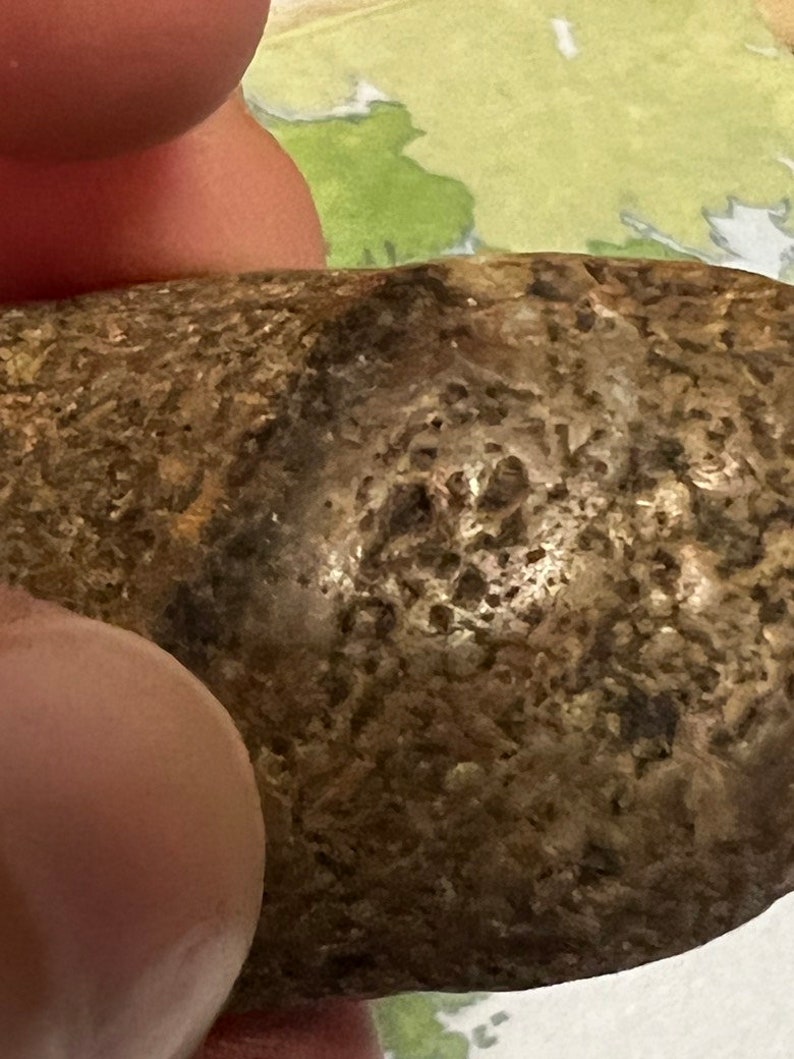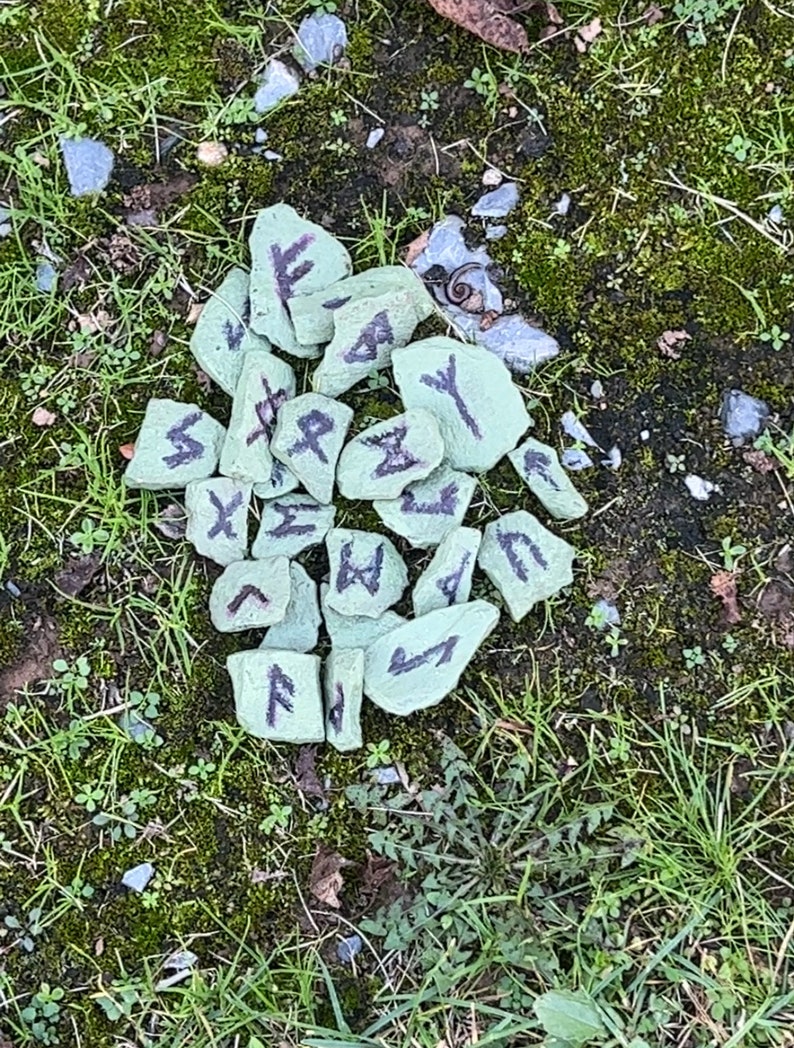Asatru, big focus on Family, Ancestors, Gods, Earth.
Pic: Trapped in a Rock, charged stone by RetroChaletStudio
What is Ásatrú?
Some of the blog will be filled with useful information on Vikings. You can't have Vikings in Maine blog without understanding some of the ways and customs of Vikings. Ásatrú, is one area of religion of the Vikings which we will talk about more here.
Please keep in mind my idea is to simplify this so that even the beginning reader can understand the overall concept, and I mean no disrespect to the Elder Asatru community in doing so. For the easiest explanation to the average reader, I will first tell you the word itself, Ásatrú, means, generically translated in Old Norse, "Belief in the Gods." yet taking it even further, from Old Norse Icelandic roots when broken down as such:
ASATRU = AS meaning "Æsir " and the TRU meaning "belief in"
grammatically putting it together, "Belief in the Aesir" = "Belief in the Gods. "
Note the plural GODS. Vikings where were indeed not Christians.
Connection to Earthly Elements Pic: RetroChaletStudio
Vikings Heathens, Polytheism, Pagan What Do All These Terms Mean?
POLYTHEISM:
Vikings were involved in polytheism, belief in more than one God. According to Asatru Alliance | Questions and Answers about Asatru it has some great information on the religion itself, suggesting this religion dates back 40,000 years, way back before Christianity. I will write more about this topic later.
IF YOU AREN'T CHRISTIAN, YOU MUST BE A HEATHEN!
In a nutshell, when Christianity conversion and widespread belief came, the golden rule is you can only worship one God, of the Bible. If you weren't on that bandwagon, or did not convert, you were labeled a Heathen. Heathen has many meanings, and was used loosely, categorizing people who did not worship the God of the Bible. These people may have been called Gentiles, Athiests, Pagan etc in historical terms. For simplification here, in a loose way of thinking, it was a term given to those who did not believe or care to be involved in Christianity.
ARE HEATHENS ALL PAGANS?
Pagans, the word itself is more of a slang term, or demeaning term which the Latin word pāgānus or Paganos, and was used in the end of the Roman empire to talk about those who didn't go to church and stayed in the towns, or did not practice the mainstream religion at the time, or perhaps worshipped more than one God. Again, a slang term that encompasses many people. Sure, all Heathens could be Pagans, and all Pagans could be Heathens in generic terms. Now let's focus on the topic at hand.
WHO CARES ABOUT LABELS? LET'S GET BACK TO ÁSATRU!
I will simplify here of course, the key components and values of this religion is a true balance of several components: there is focus on maintaining a strong and healthy relationship between onself , family, community, the divine and ancestors. Balance of all of these things comprises Asatru. The religion itself was not limited just to Vikings, but overlapped and impacted other early Germanic tribes, and shares similarities with some Celtic religion beliefs.
Breaking down these key components further:
- Having upmost respect for the ancestors, (not necessarily worshipping them, but realization of your ancestors or forebearers or forefathers if you call them, have passed down just who you are and a part of divine knowledge to you) .
- Belief and worship of the Gods, many for different reasons, and realization that these Gods may answer you, speak to you, and have provided things for you. Nature is very important in the sense that this too has been gifts of the Gods. Objects may have been infused by the Gods.
- Core values in strengthening community and family and mental balance of oneself.
The Aesir are Gods of the Clan representing the leadership, (example: Odin & Thor) as talked about in most every Saga, story, reference.
The Vanir are associated with the clan representing all things earthly, wisdom, fertile, and nature, (example: worshipping and offerings Freyja to bring birth of children or good crops).
The Jotnar whose rough and often disputed translation as "frost giants" perhaps should be looked at not in literal form, but for what they stood for. In this sense, largely reeking havoc on the Aesir, or bringing harm to the Gods. Although many skeptics say they were not in the form of literal giants, and that the word may refer to other creatures such as elves, trolls, all seemingly agree that the Jotnar loose term was symbolic of the opposite of good and those who wishes to interfere and do harm to the Gods. Perhaps the most talked about one of the Jotnar was Loki, who had formed a bond with Odin and was able to walk among the Aesir.and from which we learn most about in the Sagas.
So, with most religions, you have Good, Evil and all things in between.
USE OF RUNESTONES, or MAGICKAL TALISMEN
It is written that Odin hung himself from a tree for nine days without food or water, just to learn about the runestones and the secrets therein.
Runestones were used to conjure messages from the Gods, and usually by a Shaman or Volva (female Shaman practitioner of magic) who advised the Elder or the Chieftan, or King (or however you want to refer to the Viking in charge of the town.) The runes are mostly associated with the Elder Futhark language, each rune symbolizing a message from the Gods. Viking graves found unusual items buried with a Volva, here.
:
MODERN DAY RELIGION BASED ON TRANSLATION, GROUPS and ISSUES
Since there's no key book, and many stories and sagas have written about Asatru, it has been left it up to modern day practitioners to piece together bits and pieces of how this religion should be maintained. You can learn a lot from ancient books and sagas such as the Prose Edda and Codex Regis.
Most important for me to mention the Ásatrúarfélagið , the official Icelandic religion officially "unified" in 1972. It was co-founded by Sveinbjörn Beinteinsson - Wikipedia whmo, in 1944 was a humble sheep farmer who also wrote and sang rimur (poetry). His writing and singing would eventually gain him so much respect with people around the world, that he would be instrumental in founding this official "Fellowship of Aesir Faith" in Iceland. If you follow his works, he was always searching for more knowledge of the religion, but was instrumental in gaining recognition by the Althing, which is the official parliament of Iceland. Some of the Asatru community believe him to be the founder of Asatru in modern day culture, and date his founding to 1945.
BIG ISSUES FOR ASATRU and HEATHEN COMMUNITY ; DECLARATION 127
Herein is where the problems occur. For simplicity's sake I again use a comparison: look at modern day Catholics, Lutherans, Presbyterians, Methodists, Baptists, who all have their own little core set of values stemming under one blanket, Christianity. Same with the modern day Asatru Community has different groups or sects, with their own key and core values. Let's move to America. There are many groups of Asatru belief.
The AFA, or Asatru Folk Assembly, founded by Stephen McNallen (some sources say 1994, but their website claims 1995) is based out of California, set up communal style worship but would branch with places of worship (hofs) into other states such as North Carolina and Minnesota. McNallen has claimed he practiced Asatru in the late 1960's and claims he dubbed "the father of Asatru revival. " It should be noted that he grew the organization largely and rapidly in the 90's also authoring many books. Problematic at best are the facts that the group's white supremist beliefs.
He also founded the Viking Brotherhood, which currently consists of purchasable books and courses by McNallen. Unfortunately, the group has been closely associated with McNallen's own personal white supremicist beliefs on what Heathenry should be (white parents with white children). This spawned a shakeup in the Asatru community which came up with Declaration 127 (named after "misdeeds" from the Havamal, considered to be written by Odin himself) of which was enacted by the Asatru community to not embrace such hatred. McNallen did step down in 2016, but the controversy surrounding it remains, or simply put the damage has been done.
GOOD ARISES FROM EVIL
With all things bad, stems something good. All the publicity (both good and bad) surrounding it brought the word Asatru to light. Sometimes the bad publicity does nothing but peak public interest. It created widespread publicity for the religion in the United States and more and more people to learn about it, and some now practicing it. It caused different organizations to repeal their ties with the AFA and let them stand alone. Here are some links to read:
Declaration 127 (theasatrucommunity.org) - The Astarau community explains more here
Go Heathen - Go Asatrú Go Heathen website offers a lot of useful information about the religion and is out of Texas. They are also non racist and open to educating others.
The Asatru Alliance Homepage outlines Kindred spirits and had ties to AlThing
DRAMA AND TURMOIL IN THE HEATHEN COMMUNITY
Unfortunately, the AFA itself also caused a lot of turmoil in the Heathen community of what was and what should be. Many feel that they have tried for so long to bring their communities to light only to have the AFA associate it with hatred, which is not what some organizations in Heathenry stand for.
More on that later.




Post a Comment